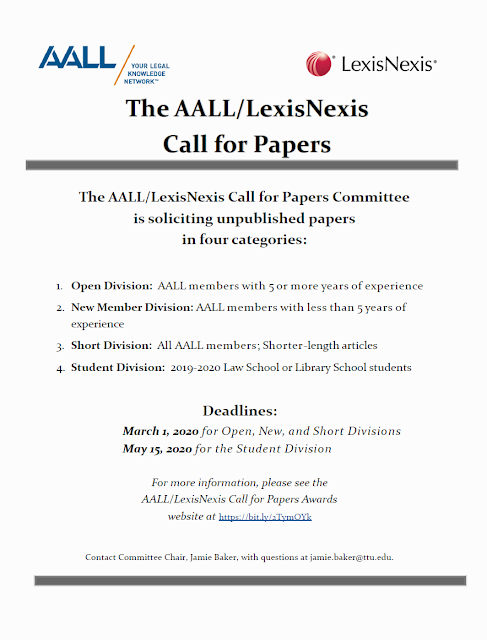The Importance Of Punctuation In Statutory Drafting - Case Turns On A Comma
The WSJ Law Blog reported on a recent case out of the 2nd Circuit that underscores the importance of punctuation in statutory drafting. And "Kenneth A. Adams, a contract drafting expert from Long Island, has written a must-read polemic about [this particular] comma."
The U.S. Second Circuit Court of Appeals opinion was authored by Judge Pierre Leval. "The question before the 2nd Circuit — whether federal courts had jurisdiction over a lawsuit involving an offshore banking transaction — hinged on the meaning of a comma found in an obscure 1933 statute that Congress attached to an international banking law known as the Edge Act. It was a comma sandwiched between a list (composed of a mix of nouns or phrases) and a modifier."
Accordingly, "[t]he plaintiffs and the defendants disagreed on what part of sentence was modified — the whole list or just the last bit before the comma. According to Judge Leval, this sort of comma is governed by a simple rule. 'When a comma is included, as in the Edge Act provision, the modifier is generally understood to apply to the entire series,' the judge wrote.
To demonstrate the rule, Judge Leval offered a contrasting example:
“This basketball team has a seven-foot center, a huge power forward, and two large guards, who do spectacular dunks,” differs from the statement, “This basketball team has a seven-foot center, a huge power forward, and two large guards who do spectacular dunks.” The first statement conveys that all four players do spectacular dunks. The latter statement conveys that only the guards do so.
Mr. Adams, however, offers his own examples to show how Judge Leval may have gotten it wrong:
[1] She was accompanied by a lawyer and the accountant who was advising her on her tax matters.
[2] She was accompanied by the lawyer and the accountant who were advising her on the revision of her will.
[3] She was accompanied by her father and her sister, who was now seven months pregnant.
[4] She was accompanied by her father and her sister, who were both giving her their full support.
"More specifically, note how in [2] the absence of a comma doesn’t preclude wide-scope modification, with the restrictive clause modifying more than the preceding noun. And note how in [3] the presence of a comma doesn’t preclude narrow-scope modification, with the nonrestrictive clause modifying just the preceding noun. Those results are inconsistent with the comma test under the rule of the last antecedent."
Adams went on to state that "[t]he case demonstrates that one cannot assume that judges are equipped to analyze ambiguity, any more than being a careful driver equips one to service a car engine."
It is a great example of how a case can turn on something as little as a comma.
The U.S. Second Circuit Court of Appeals opinion was authored by Judge Pierre Leval. "The question before the 2nd Circuit — whether federal courts had jurisdiction over a lawsuit involving an offshore banking transaction — hinged on the meaning of a comma found in an obscure 1933 statute that Congress attached to an international banking law known as the Edge Act. It was a comma sandwiched between a list (composed of a mix of nouns or phrases) and a modifier."
Accordingly, "[t]he plaintiffs and the defendants disagreed on what part of sentence was modified — the whole list or just the last bit before the comma. According to Judge Leval, this sort of comma is governed by a simple rule. 'When a comma is included, as in the Edge Act provision, the modifier is generally understood to apply to the entire series,' the judge wrote.
To demonstrate the rule, Judge Leval offered a contrasting example:
“This basketball team has a seven-foot center, a huge power forward, and two large guards, who do spectacular dunks,” differs from the statement, “This basketball team has a seven-foot center, a huge power forward, and two large guards who do spectacular dunks.” The first statement conveys that all four players do spectacular dunks. The latter statement conveys that only the guards do so.
Mr. Adams, however, offers his own examples to show how Judge Leval may have gotten it wrong:
[1] She was accompanied by a lawyer and the accountant who was advising her on her tax matters.
[2] She was accompanied by the lawyer and the accountant who were advising her on the revision of her will.
[3] She was accompanied by her father and her sister, who was now seven months pregnant.
[4] She was accompanied by her father and her sister, who were both giving her their full support.
"More specifically, note how in [2] the absence of a comma doesn’t preclude wide-scope modification, with the restrictive clause modifying more than the preceding noun. And note how in [3] the presence of a comma doesn’t preclude narrow-scope modification, with the nonrestrictive clause modifying just the preceding noun. Those results are inconsistent with the comma test under the rule of the last antecedent."
Adams went on to state that "[t]he case demonstrates that one cannot assume that judges are equipped to analyze ambiguity, any more than being a careful driver equips one to service a car engine."
It is a great example of how a case can turn on something as little as a comma.


Comments
Post a Comment